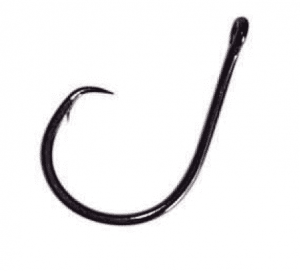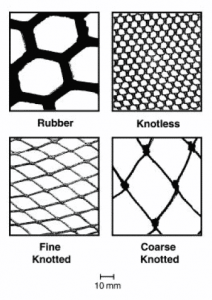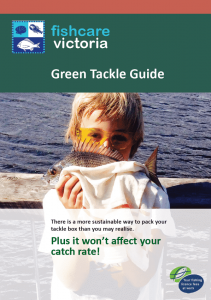Circle Hooks

Circle hooks are curved back in a circular shape rather than the common J-hook, a design aimed at lip hooking fish.
Circle hooks set themselves when the fish picks up the bait and makes to turn away, there is no need to strike when using circle hooks.
Mortality rates are decreased by approximately 50% when using circle hooks compared with the traditional J-hooks due to minimal instances of internal damage via gut hooking.
Suitable for most species of fish both fresh and salt water. If deep hooking does occur leave the hook and cut the line as close to the mouth as possible.
Knotless or Fish Friendly Landing Nets

Knotless or Fish Friendly nets are made out of a smooth PVC mesh.
The risk of damage to fins, scales and mucus layer are significantly reduced through using a knotless net.
The finer the mesh diameter the better to avoid injury.
Traditional nets cause significant tears to fins affecting mobility and significant loss of the slime layer and scales leading to abrasions and infections.
The fine mesh evenly supports a fishes weight reducing internal injury to organs. A must have for all sustainable anglers.
Lip Grips

You must support the fishes weight, keeping them horizontal while using lip grips. Photo – Jess Zaharin
Lip grips are a mechanical handling tool with opposing metal or plastic plates (typically in a “C” shape) which operate by gripping the lower jaw of the fish.
If used, Lip Grips, should only be used in conjunction with supporting the fish’s weight as picture in the photo.
Fish held vertically with lip grips risk damage to the lower jaw and misalignment of the spine which will not return to normal after release, significantly reducing survival rates.
Lip Grips can allow faster unhooking times minimising the amount of time the fish is exposed to air. If using grippers, do not allow the fish to flail as it will increase the amount of physical damage.
Lip Grips are a great way of holding a large fish in the water while removing a hook/lure for a quick release.
Non-Lead Sinkers

Australian made non-lead sinker picture here come in all shapes and sizes – Picture David Cleeland
Using lead sinkers can be bad for the aquatic environment with a build up of lead from lost sinkers.
Non lead sinkers prevent lead building up in our waterways where it has devastating impacts that will significantly reduce fish populations in the future.
The impacts of lead include, limiting plant growth and killing microorganisms (the base of the fish food chain), poisoning of waterfowl and aquatic species through ingestion.
There are bans on certain types of lead sinkers in America and Canada. Victoria has banned the use of lead shot in waterfowl hunting situations. Is it a matter of time before anglers are banned from using lead weights?
Alternative options to lead sinkers are; iron, copper, steel, brass and ceramic. Any sinker made from an alternative to lead, is a good choice.
Non-lead sinkers look like, work like and catch as many fish as lead sinkers. Ask at your local tackle store for non-lead sinker options.
The pictured non-lead sinkers are an iron based sinker. Made in Australia and available at most good tackle stores. Iron simply rusts away in waterways with no significant negative impact on our environment or fish populations.
Download our Green Tackle Guide!



